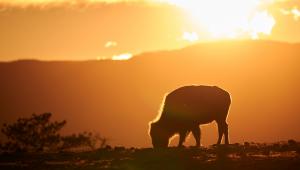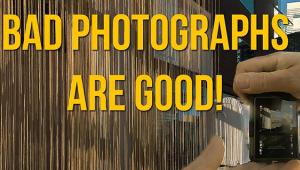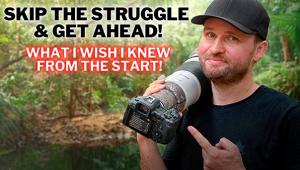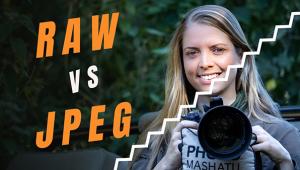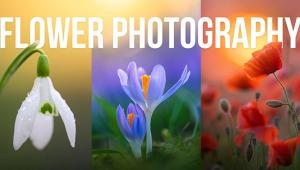I have your series of the book and I was wondering if you're planning on writing any more to this series ?
Ask A Pro: Scott Kelby Answers Your Photography Questions

Got Questions About Photography? Professional Photographer and Photoshop Expert Scott Kelby Has Got Answers.
Q. I have a small Nikon Coolpix P510. Why other than not having all the “bells and whistles” and interchangeable lenses of more expensive cameras are these small cameras shunned and not given much review?
A. The reasons I’m going to present all pretty much center on better image quality from DSLRs (or today’s mirrorless cameras). To break it down: (1) The sensors on these compact cameras are generally much smaller than those found in DSLRs, even if the megapixels are the same. But it’s not just the lower quality of the sensor in compact cameras, it’s also (2) the quality and size of the lens. The lenses on compact cameras are physically small (usually the size of a quarter or 50-cent piece) and that limits the quality of these lenses quite a bit. (3) Compact cameras are notoriously noisy in low-light situations. (4) It’s hard to get the same quality depth-of-field looks from a compact camera, even when they’re shooting at f/2.8 or lower. (5) Their widest wide angle usually isn’t nearly as wide as you’d want, or get, from a DSLR. (6) For shooting wildlife or sports, you’re pretty much out of the game in most cases with a point-and-shoot due to slow focus and lower frames per second rates. (7) We haven’t even talked about durability; the obvious “you can change lenses” thing; and on and on, because I don’t want to bury you. I’m hoping I had you at “better image quality” anyway. Nothing wrong with a point-and-shoot compact, but there are reasons why so many people “move up” to a DSLR. You’ve read just a few of them.
Q. I upgraded from the original Canon Rebel to a nicely used Canon 70D. When I first started messing with the 70D, it had a bunch of dust on the sensor, which was easily remedied with a rocket air blaster, as well as the mirror. I’ve done my best but I still have some dust on the underside of the eyepiece mirror where the AF points light up. It can be a bit irritating when looking through the eyepiece for long periods. I carefully used the lens brush to no avail. Should I just learn to live with it?
A. I would definitely take it in for a professional cleaning. Life’s too short, and the 70D is an awesome camera—don’t let that dust ruin your experience. Spend the few extra bucks and get it cleaned right. It’s worth it.
Q. I shoot service/event pics for my church and upload the final shots to a shared drive for use by the various ministry groups internally that may have need of them. My problem is that we encounter pretty significant file compression when we do, which, as you know, impacts image quality. Are you aware of any shared sites that do a better job than others of preserving image integrity and are relatively easy to use by people with varied computer skills? Would it help if I increased the resolution coming out of Lightroom? Most of the images are used for our social media sites and for website use.
A. I can tell you what I do, and it seems to work pretty well. I save my files out of Lightroom as JPEGs at a quality setting of 80. Then I transfer the images using just regular ol’ Dropbox (I create a shared folder we all can upload into and download from). The only compression happens when I create the JPEGs, and at 80 they look absolutely pristine—no visible loss of quality whatsoever. Hope that helps.
Q. I became a fan of yours nearly a decade ago. Your directions have always been spot on and easy to understand. I even (sad to say) enjoy your humor! My question: Is there a reason you didn’t include using the lowest possible ISO in your response to the reader’s question regarding shooting “silky” waterfalls in the July 2016 column?
A. First, anyone who actually enjoys my humor certainly deserves an answer, even if it’s one that’s hard for me to swallow. The answer is…I messed up. I definitely should have noted that. I left that out assuming that the reader would know that if you’re on a tripod, there’s no reason to raise the ISO from its lowest native setting (after all, you knew or you wouldn’t have pointed it out). But still, I should have included it. I try to always include stuff like that, but honestly, I just came in from a hard night of drinking and was just plastered. See, there’s that humor stuff that thankfully you totally “get,” but will probably get Shutterbug a few angry letters, so I’d better disclaim that. I was not drinking. At all.
Q. From a past answer you gave me about TTL shooting with my Canon 7D and Canon flash, you mentioned TTL isn’t always a sure thing. I’m understanding that more and more. So, without putting the camera in TTL or in any of the auto settings, is there some other way to get good flash shots? Would the answer just be the Manual mode, even though you might have to make a few test shots to get the correct settings?
A. That is exactly what I do, and what I teach in my seminars for the very reasons you’re figuring out. I set the flash to Manual mode, at 1/4 power, and then put my camera in Manual mode as well. For indoor shots with an off-camera flash, I use the following settings as my starting point every time: f/5.6, 1/125 second, ISO 100 (the lowest native on my Canon 5D Mark III). Then I take a test shot. If the flash is too bright, I turn the flash power down to 1/8 power and take another test shot. If it’s not bright enough, I turn it up a bit. That’s it. Don’t overthink it—just move the power of the flash up and down as needed. The best advice I can give is to avoid the problem most people encounter—don’t make your flash too bright. Less is more.
Scott Kelby is a photographer, Photoshop Guy, award-winning author of more than 50 books, and CEO of KelbyOne, an online education community dedicated to helping photographers take the kinds of images they’ve always dreamed of. You can learn more about Scott at his daily blog (scottkelby.com), or follow him on Twitter: @scottkelby.
(Editor’s Note: Ask a Pro is a Q&A column from professional photographer, writer, and educator Scott Kelby. Scott is here to answer all your photography-related questions, so if you have something you’d like to know, e-mail him at editorial@shutterbug.com -- with “For Scott Kelby” as the subject line -- and your query could be featured in the next edition of Ask a Pro.)
- Log in or register to post comments





























